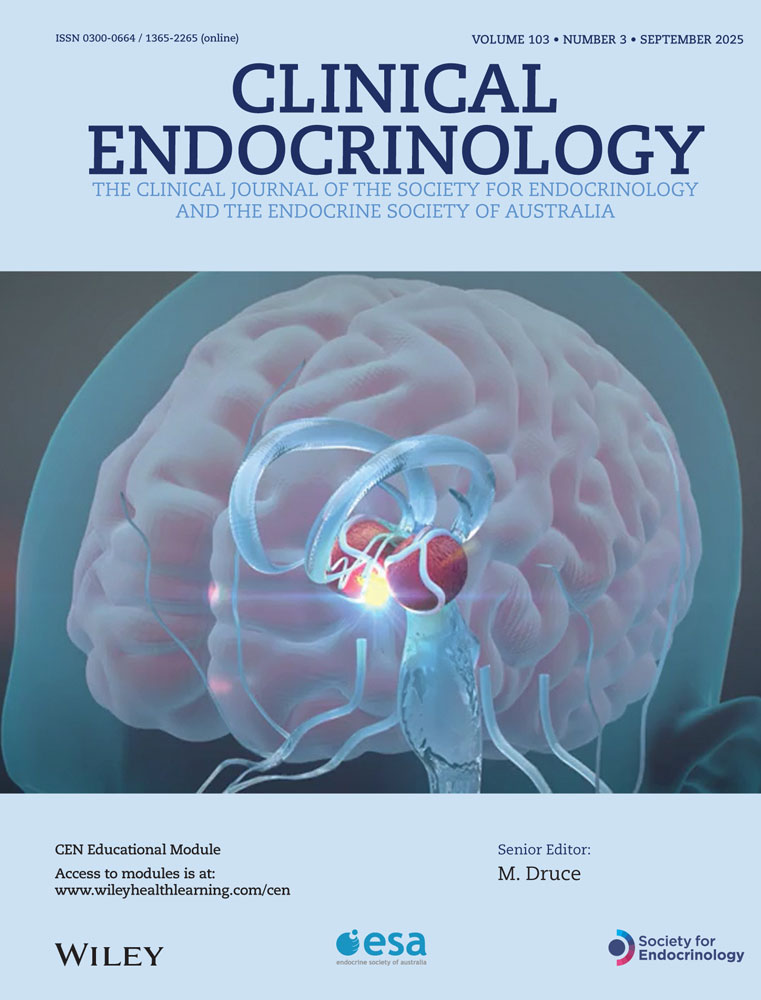Defining the normal cortisol response to the short Synacthen test: implications for the investigation of hypothalamic-pituitary disorders
Abstract
OBJECTIVE
To define the normal cortisol response to the Short Synacthen Test using four different cortisol immunoassays and to assess the implications for the investigation of hypothalamic-pituitary disorders.
DESIGN AND PATIENTS
The cortisol response to 250 μg im ACTH1–24 (Synacthen, Ciba Geigy) in 100 healthy volunteers using four different cortisol immunoassays has been measured. In 44 newly diagnosed and untreated patients with pituitary disease, basal and 30 minute post-ACTH cortisol results were also determined using the four immunoassays.
RESULTS
The distribution of cortisol results at all time points and for all methods were non-Gaussian and significant differences in the absolute values of the 5th–95th percentiles were found between methods (P < 0.01). At 30 min post-Synacthen in normals the 5th percentile of the cortisol response ranged from 510 to 626 nmol/l with the different methods. Similarly the relationship between assay results differed at different time points. No effect of age on the cortisol response was found but for stimulated cortisol values and the incremental responses females showed significantly higher responses than males (P < 0.05) for most methods. Although there was a significant positive linear correlation (P < 0.001) between stimulated and basal cortisol values for all methods, no significant relationship was found between the incremental response and basal cortisol values. In the pituitary disease patients basal and 30 minute post-ACTH cortisol results were significantly lower (P < 0.05 and < 0.001) than the control group using the same cortisol assay. When the results were compared to the 5th percentile of the gender and assay specific control group 33.3% of male and 17.4% of female patients failed the Synacthen test at 30 min.
CONCLUSIONS
The definition of the ‘normal’ response to Synacthen should be both gender and method related at all time points. The data suggest that up to one-third of untreated patients with pituitary disease may have subtle defects in the hypothalamic-pituitary-adrenal axis.




